Home › Organization

Goda, a professor of physical chemistry at the University of Tokyo, is a leader at the forefront of interdisciplinary research centered about photonics and is dedicated to the development of new research fields and industries. He obtained a B.A. degree summa cum laude from the University of California, Berkeley and a Ph.D. degree from Massachusetts Institute of Technology, both in physics. He joined the University of Tokyo as a professor in 2012 and Japan Science and Technology Agency in 2014. As an ImPACT program manager, he currently manages a large interdisciplinary team of scientists, engineers, and medical doctors to produce serendipity. He has recently selected as a Young Global Leader for the World Economic Forum and as one of AERA’s “100 people who will break through Japan.”

Program Advisor
2015.12-
Kanetaka M. Maki is Assistant Professor at National Graduate Institute for Policy Studies (GRIPS). Maki’s research interests are in the fields of socio-economics of innovation & entrepreneurship, science policy, and university-industry technology transfer. Maki holds a Ph.D. in management from the University of California, San Diego.

Program Advisor
2016.7-
Associate Program Manager
2014.10-2016.6
After graduation with a M.S. degree from Massachusetts Institute of Technology in the field of laser nuclear fusion, Kurebayashi worked in investment banking in fields such as financing and business acquisition, and later in private equity investment at a foreign-affiliated financial enterprise. Upon leaving the firm, he became involved in education while primarily working as a business and finance consultant for healthcare firms.

Program Advisor
2017.4-
Suzuki participated in the establishment of euglena Co., Ltd. in 2005 and has managed its entire R&D department since then. The group is mainly involved in life science and energy research with a focus on euglena, a type of microalgae, and has collaborated with multiple corporations and universities.

Program Advisor
2018.4-
Takuma experienced the ICT system planning, development and operation at Hitachi Systems, Ltd. In the meanwhile, he obtained a Ph.D. degree in engineering from Tokyo University of Agriculture and Technology in 2012. He is currently engaged in the educational and research activities for practical application of “Program management” at Chiba Institute of Technology.

Associate Program Manager
2016.3-
Nitta obtained a Ph.D. degree from University of Tokyo, School of Engineering in 2006. While in school Nitta started working for a start up company and engaged in development and commercialization of cell function analysis instruments, then worked for Sony Corporation to start up a flow cytometer business.

Associate Program Manager
2015.10-
Ito obtained a Ph.D. degree in life sciences from Tohoku University in 2006 and became a PRESTO researcher at JST and an project research associate at Keio University before reaching his current position in 2016. To achieve the sustainable society, Ito is challenging to use microalgae as biofuel and high-performance feedstuff with a background in plant biology and metabolomics.

Associate Program Manager
2016.3-
Sugimura obtained a Ph.D. degree in engineering from Tohoku University in 2007 and then engaged in the development of parallel image processing and micro controller IPs as a hardware and software engineer. After that, he joined a new business development division of an optical instruments company for development of component technology. He has been engaged in the current position in March 2016.

Program Assistant
2015.10-

Program Assistant
2017.9-

Project7 Leader
2018.1-
Project7 Group2&5 Leader
2017.4-2017.12
Nitta obtained a Ph.D. degree from University of Tokyo, School of Engineering in 2006. While in school Nitta started working for a start up company and engaged in development and commercialization of cell function analysis instruments, then worked for Sony Corporation to start up a flow cytometer business.
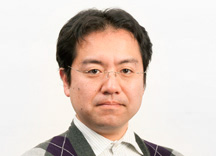
Professor
Graduate School of Materials Science
Nara Institute of Science and Technology (NAIST)
Project7 Associate Leader
2017.4-
Hosokawa graduated with a Ph.D. degree in engineering from Osaka University’s Graduate School of Engineering in 2000. After serving as a CREST fellow at JST, Hosokawa joined NAIST as a research associate professor and reached his current position in 2016. Hosokawa is focused on explicating strong excitation phenomena of biological material induced by ultrashort pulse lasers and developing new technology in single-cell manipulation and measurement under the microscope.
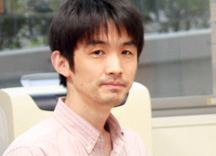
Associate Professor
Graduate School of Engineering
University of Tokyo
Project7 Group1 Leader
2017.4-
Project7 Leader
2017.4-2017.12
Ozeki obtained a Ph.D. degree in electrical engineering from the University of Tokyo in 2004 and became a postdoctoral fellow at Japan Science and Technology Agency, an assistant professor at Osaka University, and a PRESTO researcher before reaching associate professorship at the University of Tokyo. With a background in electrical engineering, Ozeki is involved in the development of novel bio-imaging techniques with knowledge in the generation, control, and detection technology of light.

Project7 Group3 Leader
2017.4-
Sugimura obtained a Ph.D. degree in engineering from Tohoku University in 2007 and then engaged in the development of parallel image processing and micro controller IPs as a hardware and software engineer. After that, he joined a new business development division of an optical instruments company for development of component technology. He has been engaged in the current position in March 2016.

Professor
Graduate School of Science
University of Tokyo
Project7 Group5 Leader
2018.1-
Project7 Group4 Leader
2017.4-2017.12
One of the youngest professors at the University of Tokyo, Uemura specializes in single-molecule and single-cell measurement. After attaining his Ph.D., he studied abroad twice at Stanford University and served as an assistant professor at the University of Tokyo and a team leader at RIKEN before taking his current position in 2014. Uemura has successfully visualized the world’s first protein translation through novel single-molecule technologies.

Associate Professor
Graduate School of Engineering
Kyushu University
Project8 Leader
2014.11-
In 2006, Hoshino became a fellow at Japan Society for the Promotion of Science (JSPS) while at the University of California, Irvine. Hoshino became an assistant project scientist in 2009 at the University of California, Irvine, and in 2010, became an assistant professor at Kyushu University’s Graduate School of Engineering. He reached his current position in 2013.

Project Associate Professor
Tohoku University Hospital
Project9 Leader
2014.11-
Nakagawa is engaged in treatment and translational research of traumatic brain injury as well as research and development of medical devices. He is also engaged in the bedside solution program at Tohoku University Hospital and Japan Biodesign Program to identify unmet clinical needs and to improve medicine.

Assistant Proffessor
Research Institute for Electronic Science
Hokkaido University
Project8 Team Leader
2016.4-
Yonamine obtained a Ph.D. degree in Bioengineering from Tokyo Tech in 2010. After postdoctoral training at University of California, Irvine, Michigan University, National Institute for Materials Science, and a project assistant professor at Kyushu University, he reached his current position in 2018.
Yonamine currently develops a Raman imaging molecular-probe for a target cell based on his experience of organic chemistry and biochemistry.
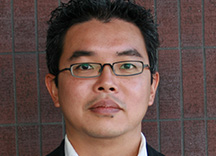
Professor
Graduate School of Engineering
Kobe University
Project8 Team Leader
2016.4-
Hasunuma graduated with a Ph.D. from Osaka University in 2004. He is devoted to the metabolic engineering of microorgranisms and higher plants based on multi-omics analysis. After joining Research Institute of Innovative Technology for the Earth (RITE), he has developed dynamic metabolic profiling system by the combination of metabolomics and in vivo stable isotope labeling technique. After joining Kobe University, he has engineered microbial strains based on the metabolic profiling for the development of bio-fuel and bio-based chemical process.

Assistant Professor
Graduate school of biostudies
Kyoto University
Project8 Team Leader
2016.4-
By molecular genetic approach, Yamano is involved in research for identifying the novel regulatory mechanism of photosynthesis, CO2-concentrating mechanism, and lipid accumulation in microalgae. He obtained a Ph.D. degree in Biostudies from Kyoto University in 2008.

Team Leader
Enzyme Research Team
RIKEN
Project8 Team Leader
2016.4-
Numata worked as a JSPS Postdoctoral Fellow for Research Abroad at Tufts University (USA) where he studied biosynthesis of silk-based polymers via bacterial pathways as well as biomedical application of silk-based polymers to gene carriers. He moved to RIKEN as a Senior Scientist in 2010 to start up the Laboratory for Enzyme Research and also to investigate biosyntheses and material design of structural proteins, polypeptide and poly(amino acid). He reached his current position in 2012.

Project Associate Professor
Institute of Medical Science
University of Tokyo
Project8 Team Leader
2015.4-
After graduation from the Graduate School of Agricultural and Life Sciences at the University of Tokyo, Watarai became involved in the research and development of recombinant proteins and monoclonal antibodies as next-generation drugs at Pharmaceutical Division of Kirin Brewery Co. Ltd. (now Kyowa Hakko Kirin). After conducting research at RIKEN and JST, Watarai reached his current position in 2014.

Assistant Professor
Department of Rehabilitation and Regenerative Medicine
Department of Pharmacology, College of Physicians and Surgeons
Columbia University Medical Center
Project8 Team Leader
2017.4-
Yazawa obtained a Ph.D. degree in Pharmaceutical Science from Kyoto University in 2007. After a 5-year postdoctoral training at Stanford University, he started his research laboratory at Columbia University. Yazawa developed heart disease models using iPS cells derived from patients and is also involved in the research and development of new drugs and biotools.

Professor and Chairman
Department of Neurosurgery
Graduate School of Medicine
Tohoku University
Project9 Team Leader
2015.3-
Tominaga’s interests cover clinical and translational research in neurosurgery. His conducts the research and development of medical devices and clinical trials based on them. His team intends to deliver mesenchymal stem cells to regenerate brain function for stroke patients.

Professor and Manager of Hematology and Rheumatology
Tohoku University Hospital
School of Medicine
Tohoku University
Project9 Team Leader
2015.3-
Harigae graduated from Tohoku University’s School of Medicine in 1986 and reached his current position in 2007. His expertise lies in hematology. He practices the treatment of blood diseases including hematopoietic malignancies and works on the control mechanism in hematopoietic differentiation.
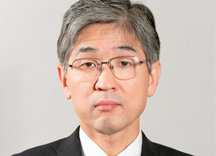
Professor
Graduate School of Medicine
University of Tokyo
Project9 Team Leader
2015.4-
In addition to his professorship, Yatomi concurrently serves as a Director of Department of Clinical Laboratory at the University of Tokyo Hospital. His expertise lies in laboratory medicine and hematology. He hopes to apply the knowledge of the Serendipiter to the laboratory examination. Yatomi is also involved in basic and clinical research on bioactive lipids.

Professor
Department of Clinical Research and Regional Innovation
University of Tsukuba
Project9 Team Leader
2016.4-
Matsusaka’s expertise lies in medical oncology. He offers chemotherapy including molecular target therapy, primarily to gastroenterological cancer.
To establish the personalized cancer medicine, he is engaged in the research and development of diagnostic method of the estimated effectiveness of chemotherapy drugs to individual patients. Matsusaka now aims at the practical application of the liquid biopsy focused on circulating tumor cell (CTC) in the clinical setting.

Assistant Professor
Kyoto University Hospital
Project9 Team Leader
2016.4-
Mineharu graduated Kyoto Univ. School of Medicine in 2001 and gained his Ph.D. degree in 2008. He specializes in genetic epidemiology of cerebrovascular diseases especially moyamoya disease and is trying to establish presymptomatic diagnosis and novel treatments for these diseases. He is also an expert of immunotherapy for brain tumor.

Project0 Leader
2017.4-
Ito obtained a Ph.D. degree in life sciences from Tohoku University in 2006 and became a PRESTO researcher at JST and an project research associate at Keio University before reaching his current position in 2016. To achieve the sustainable society, Ito is challenging to use microalgae as biofuel and high-performance feedstuff with a background in plant biology and metabolomics.

Project1 Leader
2016.3-2017-2
Nitta obtained a Ph.D. degree from University of Tokyo, School of Engineering in 2006. While in school Nitta started working for a start up company and engaged in development and commercialization of cell function analysis instruments, then worked for Sony Corporation to start up a flow cytometer business.

Director
R&D Department
euglena Co., Ltd.
Project2 Leader
2014.11-2017.3
Suzuki participated in the establishment of euglena Co., Ltd. in 2005 and has managed its entire R&D department since then. The group is mainly involved in life science and energy research with a focus on euglena, a type of microalgae, and has collaborated with multiple corporations and universities.

Associate Professor
Graduate School of Engineering
University of Tokyo
Project3 Leader
2014.11-2017.3
Ozeki obtained a Ph.D. degree in electrical engineering from the University of Tokyo in 2004 and became a postdoctoral fellow at Japan Science and Technology Agency, an assistant professor at Osaka University, and a PRESTO researcher before reaching associate professorship at the University of Tokyo. With a background in electrical engineering, Ozeki is involved in the development of novel bio-imaging techniques with knowledge in the generation, control, and detection technology of light.
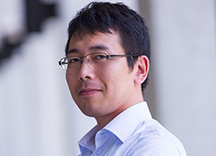
Chief Technical Officer
R&D Department
LPixel, Inc.
Project4 Leader
2016.5-2017.3
Kutsuna obtained a Ph.D. degree in life science from the University of Tokyo in 2006 and became a postdoctoral fellow and an assistant professor before reaching associate professor at the University of Tokyo. In 2014, Kutsuna participated in the establishment of LPixel Inc. with graduates of same laboratory and worked as technical advisor and CTO. Kutsuna is involved in the development of optimum analyzing software for biomedical images based on researcher’s purposes, biological materials and image properties.

Professor
Graduate School of Materials Science
Nara Institute of Science and Technology (NAIST)
Project5 Leader
2014.11-2017.3
Hosokawa graduated with a Ph.D. degree in engineering from Osaka University’s Graduate School of Engineering in 2000. After serving as a CREST fellow at JST, Hosokawa joined NAIST as a research associate professor and reached his current position in 2016. Hosokawa is focused on explicating strong excitation phenomena of biological material induced by ultrashort pulse lasers and developing new technology in single-cell manipulation and measurement under the microscope.

Professor
Graduate School of Science
University of Tokyo
Project6 Leader
2014.11-2017.3
One of the youngest professors at the University of Tokyo, Uemura specializes in single-molecule and single-cell measurement. After attaining his Ph.D., he studied abroad twice at Stanford University and served as an assistant professor at the University of Tokyo and a team leader at RIKEN before taking his current position in 2014. Uemura has successfully visualized the world’s first protein translation through novel single-molecule technologies.

Associate Professor
Graduate School of Engineering
Kyushu University
Project8 Leader
2014.11-2017.3
In 2006, Hoshino became a fellow at Japan Society for the Promotion of Science (JSPS) while at the University of California, Irvine. Hoshino became an assistant project scientist in 2009 at the University of California, Irvine, and in 2010, became an assistant professor at Kyushu University’s Graduate School of Engineering. He reached his current position in 2013.

Project Associate Professor
Tohoku University Hospital
Project9 Leader
2014.11-2017.3
Nakagawa is engaged in treatment and translational research of traumatic brain injury as well as research and development of medical devices. He is also engaged in the bedside solution program at Tohoku University Hospital and Japan Biodesign Program to identify unmet clinical needs and to improve medicine.

Research Assistant Professor
Graduate School of Science
University of Tokyo
Project1 Team Leader
2015.4-2017.3
Lee attained a doctorate degree in the Department of Environmental and Ocean Engineering from the University of Tokyo in 2008. After serving as a research scientist at Sweden’s Lund University and an International Program Associate at RIKEN, Lee reached his current position in 2013. Lee’s interests lie in the development of microfluidic devices and immunoassays.

Professor
Department of Bioengineering
University of California, Los Angeles
Project1 Team Leader
2015.4-2017.3
Di Carlo joined the faculty of the Department of Bioengineering at the University of California, Los Angeles in 2008. He is involved in unique research that crosses multiple realms of science while also taking part in the startup of three venture companies. In 2015, Di Carlo was elected a Fellow of the Royal Society of Chemistry.

Unit Leader
Quantitative Biology Center
RIKEN
Project1 Team Leader
2015.4-2017.3
Through the ImPACT program, Tanaka develops glass-based microchips that can endure high-intensity lasers and sound and are well-suited for optical measurements.

Senior Researcher
R&D Department
euglena Co., Ltd.
Project2 Team Leader
2014.11-2017.3
After working at a stock brokerage firm, Iwata got a Ph.D. degree in agriculture from the Graduate School of Applied Technology at the University of Tokyo. Iwata reached his current position in 2013 and specializes in microbiology research and the selective breeding of microalgae. He is also an authorized securities analyst (CCMA).

Assistant Professor
Department of Rehabilitation and Regenerative Medicine
Department of Pharmacology, College of Physicians and Surgeons
Columbia University Medical Center
Project2 Team Leader
2015.4-2017.3
Yazawa obtained a Ph.D. degree in Pharmaceutical Science from Kyoto University in 2007. After a 5-year postdoctoral training at Stanford University, he started his research laboratory at Columbia University. Yazawa developed heart disease models using iPS cells derived from patients and is also involved in the research and development of new drugs and biotools.
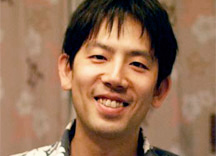
Researcher
Nano Medical Engineering Laboratory
RIKEN
Project2 Team Leader
2015.4-2017.3
Uzawa received his Ph.D. from Kyoto University in 2006. At present, his research interest is in the application of biomolecules based on the understanding of those functions at the molecular level.

Professor
Research Center for Advanced Science and Technology
University of Tokyo
Project2 Team Leader
2015.4-2017.3
Okamoto joined the University of Tokyo in 2012 as a professor. How molecules are assembled to build our body? Such a question drives him to work on the design of a variety of new reactions and manmade biopolymers.

Project Assistant Professor
Graduate School of Science
University of Tokyo
Project3 Team Leader
2015.2-2017.3
Lei graduated in 2013 with a doctorate degree from the Electronic Department of Engineering at Tsinghua University, Beijing, China. He joined the University of Tokyo as a postdoctoral fellow in 2014 and is focused on super high-speed imaging technology for biomedicine and green energy.

Assistant Professor
Graduate School of Science
University of Tokyo
Project3 Team Leader
2014.12-2017.3
After graduating from the University of Tokyo with a doctorate in physics in 2006, Mikami joined Hitachi, Ltd. as a researcher while also serving as visiting researcher to University of California, Irvine and reached his current position in 2014. His expertise lies in optical physics and optical engineering.

Lecture
Graduate School of Science
University of Tokyo
Project3 Team Leader
2014.11-2017.3
After graduating with a M.S. degree from the University of Tokyo, Ideguchi joined Canon Inc. and then moved to Max Planck Institute of Quantum Optics for his doctoral research. He received his Ph.D. from Ludwig Maximilian University Munchen. He took his current position in 2014. Using optical frequency combs, Ideguchi tries to pioneer new spectroscopy methods.

JSPS Researcher
Graduate School of Engineering
University of Tokyo
Project3 Team Leader
2015.4-2017.3
Suzuki graduated from the Washington University in St. Louis with a Ph.D. degree in Biomedical Engineering in 2014. Using his expertise in applied physics and optics, Suzuki currently develops optical live imaging techniques for medical applications.

Associate Professor
Kochi University
Project4 Team Leader
2015.4-2017.3
Oikawa served as an integrated-circuit design engineer for semiconductors and JST CREST researcher before taking his current position in 2015. In 2013, he attained his Ph.D. degree from Chiba University’s Graduate School of Engineering.

Emeritus Professor
Graduate School of Information Science and Technology
University of Tokyo
Project4 Team Leader
2014.11-2017.3
Hiraki earned his doctoral degree in physics from the University of Tokyo. He joined the Electrotechnical Laboratory in 1982 and spent time at IBM’s Thomas J. Watson Research Center before joining the University of Tokyo as a professor in information science and technology. Hiraki is engaged in research on computer architecture and ultra-high speed networks.

Chief Engineer
R&D Department
LPixel, Inc.
Project4 Team Leader
2016.5-2017.3
After finishing his PhD at University of Tokyo, school of Arts and Sciences, writing a thesis in the field of mathematical physics, Aisaka has worked as postdoctoral researchers in Brazil and Germany. Since 2015, he works at LPixel Inc. and develops programs for image processing and analysis.

Postdoctoral Fellow
Graduate School of Engineering
University of Tokyo
Project5 Team Leader
2015.1-2017.3
Iino graduated with a doctorate in engineering from the Nara Institute of Science and Technology in 2013 and reached his current position in 2015. With a background in single-cell measurement and manipulation using the femtosecond laser, Iino is in the process of developing high-speed cell-soring technology.
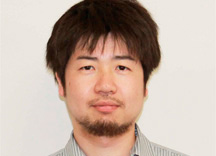
Postdoctoral Fellow
Graduate School of Science
University of Tokyo
Project5 Team Leader
2015.1-2017.3
Isozaki graduated from the University of Tokyo with a Ph.D. degree in Mechano-Informatics in 2014. He took his current position in 2015. He is currently engaged in the development of a novel high-throughput cell sorting device, taking advantage of his background in mechanical engineering, especially optical MEMS.

Professor
Graduate School of Engineering
Nagoya University
Project5 Team Leader
2015.4-2017.3
Arai’s expertise lies in robotics, specifically in micronanomechatronics. He has spent many years working on the counting, separation, and manipulation of cells through systems that integrate microfluidic chips and robotics.

Project Assistant Professor
Graduate School of Science
University of Tokyo
Project6 Team Leader
2014.11-2017.3
Oguchi graduated with a doctorate from Waseda University in 2009. He reached his current position after serving as a research fellow at the Japan Society for the Promotion of Science (JSPS) and RIKEN. Oguchi currently works on the development of single-cell sequencing technology.

Project Assistant Professor
Graduate School of Science
University of Tokyo
Project6 Team Leader
2014.11-2017.3
Shirasaki graduated with a doctorate from the Graduate School of Science and Engineering at Waseda University in 2007. He has worked on single-cell measurement technology at both Kazusa DNA Research Institution and RIKEN. Shirasaki is interested in combining microfluidics and single-molecule fluorescence microscopy to develop new measurement techniques.
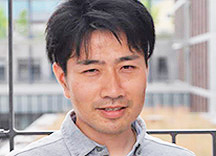
Assistant Professor
Graduate School of Engineering
Kyoto University
Project6 Team Leader
2015.4-2017.3
With his expertise in microfluidics, he is developing a preparation technology that extracts, separates, and purifies RNA and DNA from single cells.

Project Assistant Professor
Graduate School of Engineering
Kyushu University
Project8 Team Leader
2016.4-2017.3
Yonamine obtained a Ph.D. degree in Bioengineering from Tokyo Tech in 2010. After postdoctoral training at University of California, Irvine, Michigan University, and National Institute for Materials Science, he reached his current position in 2016.
Yonamine currently develops high-throughput screening for algae that produce biofuel with high efficiency based on his experience of organic chemistry and biochemistry.

Professor
Graduate School of Engineering
Kobe University
Project8 Team Leader
2016.4-2017.3
Hasunuma graduated with a Ph.D. from Osaka University in 2004. He is devoted to the metabolic engineering of microorgranisms and higher plants based on multi-omics analysis. After joining Research Institute of Innovative Technology for the Earth (RITE), he has developed dynamic metabolic profiling system by the combination of metabolomics and in vivo stable isotope labeling technique. After joining Kobe University, he has engineered microbial strains based on the metabolic profiling for the development of bio-fuel and bio-based chemical process.

Assistant Professor
Graduate school of biostudies
Kyoto University
Project8 Team Leader
2016.4-2017.3
By molecular genetic approach, Yamano is involved in research for identifying the novel regulatory mechanism of photosynthesis, CO2-concentrating mechanism, and lipid accumulation in microalgae. He obtained a Ph.D. degree in Biostudies from Kyoto University in 2008.

Team Leader
Enzyme Research Team
RIKEN
Project8 Team Leader
2016.4-2017.3
Numata worked as a JSPS Postdoctoral Fellow for Research Abroad at Tufts University (USA) where he studied biosynthesis of silk-based polymers via bacterial pathways as well as biomedical application of silk-based polymers to gene carriers. He moved to RIKEN as a Senior Scientist in 2010 to start up the Laboratory for Enzyme Research and also to investigate biosyntheses and material design of structural proteins, polypeptide and poly(amino acid). He reached his current position in 2012.

Project Associate Professor
Institute of Medical Science
University of Tokyo
Project8 Team Leader
2015.4-2017.3
After graduation from the Graduate School of Agricultural and Life Sciences at the University of Tokyo, Watarai became involved in the research and development of recombinant proteins and monoclonal antibodies as next-generation drugs at Pharmaceutical Division of Kirin Brewery Co. Ltd. (now Kyowa Hakko Kirin). After conducting research at RIKEN and JST, Watarai reached his current position in 2014.

Professor and Chairman
Department of Neurosurgery
Graduate School of Medicine
Tohoku University
Project9 Team Leader
2015.3-2017.3
Tominaga’s interests cover clinical and translational research in neurosurgery. His conducts the research and development of medical devices and clinical trials based on them. His team intends to deliver mesenchymal stem cells to regenerate brain function for stroke patients.

Professor and Manager of Hematology and Rheumatology
Tohoku University Hospital
School of Medicine
Tohoku University
Project9 Team Leader
2015.3-2017.3
Harigae graduated from Tohoku University’s School of Medicine in 1986 and reached his current position in 2007. His expertise lies in hematology. He practices the treatment of blood diseases including hematopoietic malignancies and works on the control mechanism in hematopoietic differentiation.

Professor
Graduate School of Medicine
University of Tokyo
Project9 Team Leader
2015.4-2017.3
In addition to his professorship, Yatomi concurrently serves as a Director of Department of Clinical Laboratory at the University of Tokyo Hospital. His expertise lies in laboratory medicine and hematology. He hopes to apply the knowledge of the Serendipiter to the laboratory examination. Yatomi is also involved in basic and clinical research on bioactive lipids.

Head (Gastroenterological Chemotherapy Department)
Cancer Institute Hospital
Japanese Foundation for Cancer Research
Project9 Team Leader
2016.4-2017.3
Matsusaka’s expertise lies in medical oncology. He offers chemotherapy including molecular target therapy, primarily to gastroenterological cancer.
To establish the personalized cancer medicine, he is engaged in the research and development of diagnostic method of the estimated effectiveness of chemotherapy drugs to individual patients. Matsusaka now aims at the practical application of the liquid biopsy focused on circulating tumor cell (CTC) in the clinical setting.

Assistant Professor
Kyoto University Hospital
Project9 Team Leader
2016.4-2017.3
Mineharu graduated Kyoto Univ. School of Medicine in 2001 and gained his Ph.D. degree in 2008. He specializes in genetic epidemiology of cerebrovascular diseases especially moyamoya disease and is trying to establish presymptomatic diagnosis and novel treatments for these diseases. He is also an expert of immunotherapy for brain tumor.

Associate Professor
Graduate School of Engineering
Chiba University
Project4 Leader
2014.11-2016.3
Shimobaba obtained a Ph.D. degree from Chiba University’s Graduate School of Science and Technology in 2002. After serving as a fellow in fundamental sciences at RIKEN and an associate professor at Yamagata University, Shimobaba reached his current position in 2009. His research in wave optics and high-speed computing algorithms and software is used to develop 3D microscopes and holographic displays and projectors.

Assistant Professor
Faculty of Engineering Science
Kansai University
Project3 Team Leader
2015.4-2016.3
Tahara joined the Japan Society for the Promotion of Science (JSPS) in 2011 and attained a doctorate in engineering from the Kyoto Institute of Technology in 2013. He took his current position later that year. Tahara’s expertise lies in wave optics and digital optics. He is currently focused on holography and signal processing.

Associate Professor
Graduate School of Engineering
University of Tokyo
Project3 Team Leader
2015.4-2016.3
Sakata completed his doctorate program in the Graduate School of Engineering at Osaka University in 2003. After serving as a NIMS researcher and a project lecturer at the University of Tokyo’s Center for NanoBio Integration, Sakata reached his current position. He is now involved in the research and development of biosensors using the semiconductor principle.

Associate Professor
Graduate School of Advanced Integration Science
Chiba University
Project4 Team Leader
2015.6-2016.3
Tsumura earned his doctorate in engineering from Osaka University in 1995. He became an assistant professor at Chiba University in computer science and then became a JST Sakigake Program researcher in the fields of information infrastructure and usage environment before taking his current position in 2007. His primary research is in image processing.

Assistant Professor
Institute for Integrated Cell-Material Science (iCeMS)
Kyoto University
Project6 Team Leader
2014.10-2016.3
Wang graduated in 2004 with a Ph.D. degree from University of Southern California after studying neuroscience under Dr. Michael W. Quick. She became a chief researcher at Kyoto University’s WPI-iCeMS Program in 2012. Wang is interested in the gene expression that results in neural plasticity, a fundamental aspect of molecular and cellular learning mechanisms.

Project Assistant Professor
Graduate School of Media and Governance
Keio University
Project8 Team Leader
2014.11-2016.3
Assigned to the Associate Program Maneger
To achieve the sustainable society, Ito currently tries to find ways to use microalgae as biofuel and high-performance feedstuff.
Program Advisor
2016.8-2017.1
Uehara joined a healthcare venture capital firm in 2016, after experiencing product marketing at a life science company and management consulting at a global consulting firm. He received his M.S. degree from the University of Tokyo and his MBA degree from the University of California, Berkeley.
Program Advisor
2014.11-2018.3
Wakabayashi is a seed/early stage investor in life science. He formed Japan's first fund focused on university startups in 2002 and has invested in roughly 30 companies since then. He holds LLB from the University of Tokyo and MBA from INSEAD.
Associate Program Manager
2017.4-2018.3
After graduation with a M.Ed. degree, Fujita worked at Public Relations and Science Communication in research institutes(TUAT,JAMSTEC,ISM.) of machine engineering and computer science.
He doubles his family business as a modeling production company and Public Relations section of ImPACT Program.